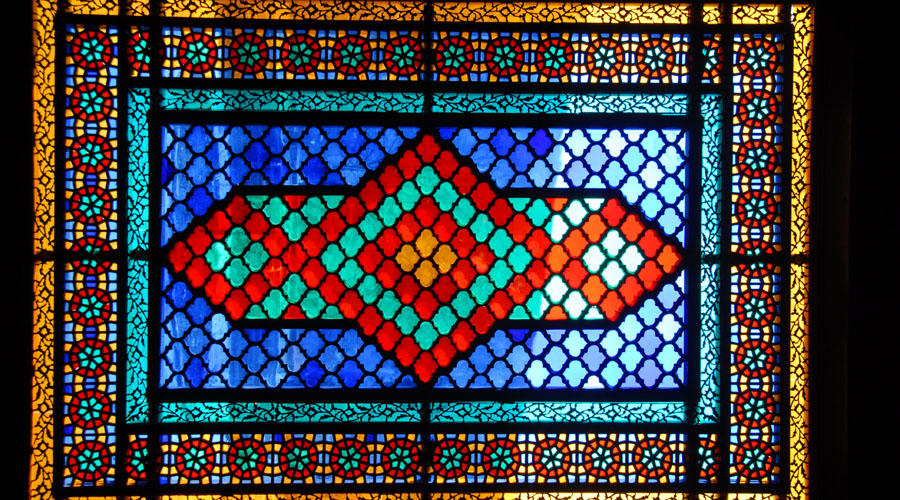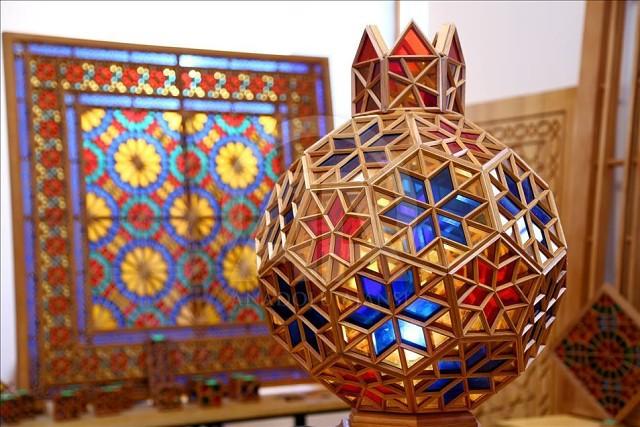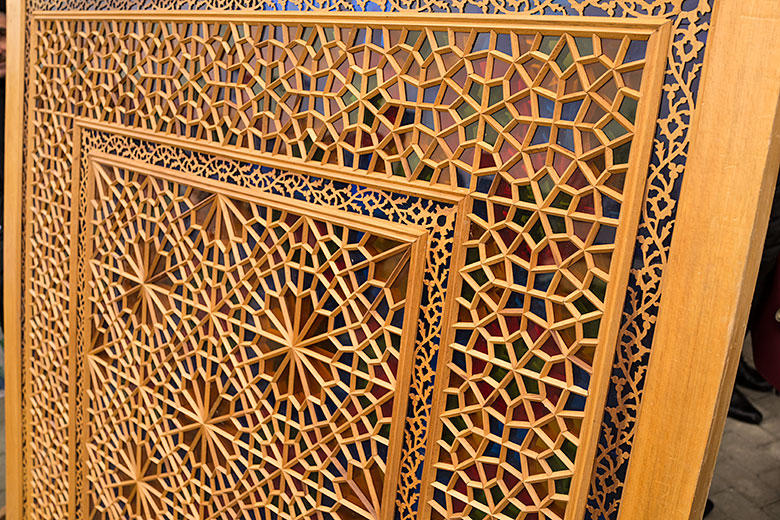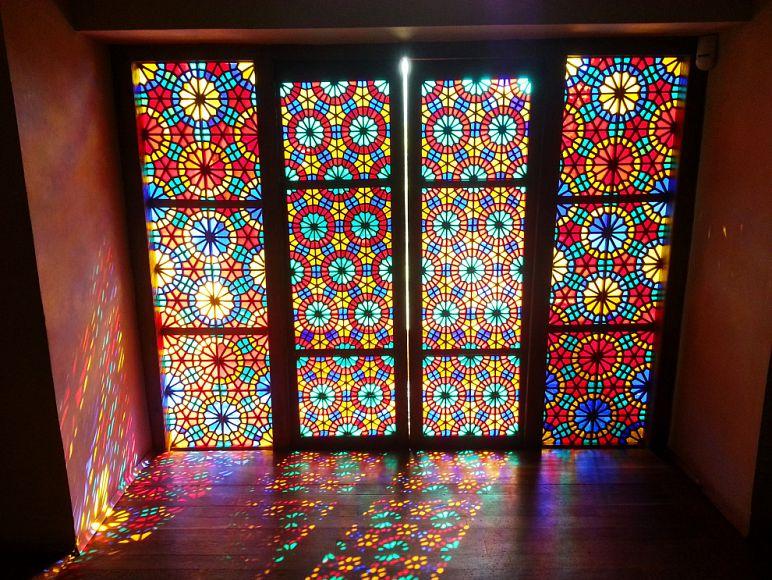Shebeke, unique art of Azerbaijani masters
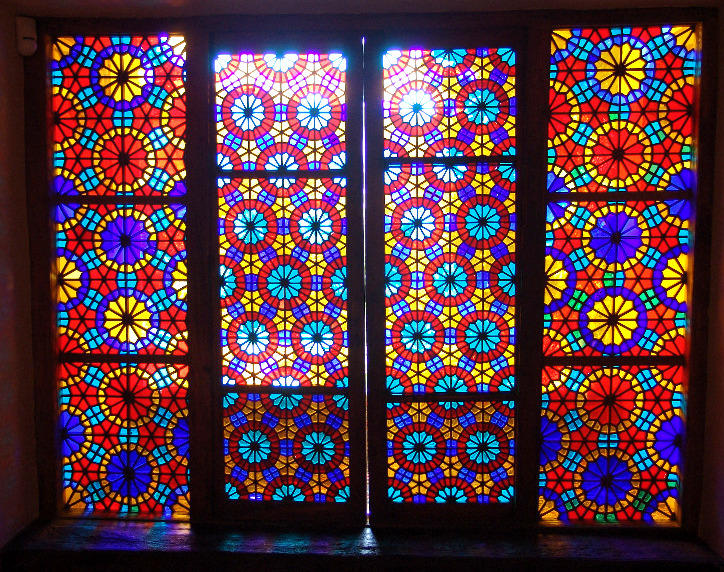
By Aygul Salmanova
Azerbaijan, with its rich historical and architectural heritage, is famous for its historical monuments, one of the most mysterious, charming features of which is the wide coverage of “shebeke” art in the architectural buildings of its ancient cities, of which Sheki and Nakhchivan draw special attention.
Shebeke as a form of architecture appeared in the Azerbaijani architecture from the 9th-12th centuries. The earliest examples of Shebeke art, made from stone, were found in Azerbaijan by archaeologists; openwork stone lattices were in the palaces, and in simple houses, baths, mosques.
The peculiarity of the art is based on the fact that no glue or nails are used during the construction of the figures. Little pieces of colored glass are inserted into a wooden lattice usually made from walnut or oak trees.
Folk craftsmen of the 17th-18th centuries used in their compositions colored glass with thickness of only one millimeter. Contemporary craftsmen, however, cannot reach this level: the material used by them is glass about three millimeters thick.
Sheki, with its delightful beauty of nature, hospitable people and the richest history, has many interesting architectural monuments that are worth paying attention to. However, still, when it comes to the architecture of Sheki, the first association that comes to mind is Shebeke.
The Palace of Sheki Khans can be considered as the most striking example of shebeke art. This majestic Royal Palace of Sheki Khans, built in the 18th century without a single nail with luxurious wall paintings and openwork windows, is rightly called the pearl of Azerbaijani architecture in the stone citadel.
Before to start a new piece of Shebeke art, a master "turns on" his fantasy, because firstly it is necessary to use imagination to create a new and exclusive pattern. Then a "layout" is done on the paper, that is, a life-size model is drawn to calculate the size of all the parts with maximum accuracy.
After that, work on wood begins: the frame is prepared, the elements of the construction are cut out, account of which goes to thousands, with grooves for the glass. The next and the final step is assembling. Shebeke requires high precision, because with the slightest mistake, the entire mosaic created can fall apart into colored pieces.
Another region popular with having an architecture rich in shebeke is Nakhchivan. When it comes to the tradition of shebeke, it is impossible not to recall the Khan palace in Nakhchivan, Jameh in Ordubad as well as a number of other monuments in the Autonomous Republic, as magnificent examples of this art. In recent years, shebeke samples have been widely used in the doors and windows of the restored monuments.
Khan's palace in Nakhchivan is one of the most beautiful examples of this art. The Palace, built in a special order and combining many types of folk art, is distinguished by its original architectural style.
In the palace, built in the 17th century, a 40-centimeter floor-standing throne was created in the western corner of the hall for guests. The windows in this corner are decorated with shebeke from the floor to the ceiling, while the ceiling is decorated with small mirrors. Shebeke compositions with colorful shades in the palace preserve the two centuries old look and with their brightness attract the attention of many tourists visiting Nakhchivan.
Geysariyya, a historical monument of the 17th century built of baked bricks, which located in the center of Ordubad, is another monument that features the examples of shebeke art in itself.
Geysariyya means a covered oriental market built in the past to sell the king's diamonds and jewelry. Such buildings can be found in three parts of the world: Samarkand, Tabriz and Ordubad.
The monument consists of a hall center, a round dome covering its roof, composite four supporters holding the dome in the corners and the passages arranging between the supporters and side wall recesses. In 1978 Geysariyya was restored by Zakir Hashim oglu Babayev, architect from Ordubad and since 1981 the monument has been functioning as History-Ethnography Museum of Ordubad region.
With regard to its architectural–constructive structure, Juma Mosque linked to the 18th century, which is rich in shebeke samples, was erected at the highest point in the central square of Ordubad.
Shebeke is one of the most demanding areas of folk art that requires special abilities, experience and technology. It is like light itself: fragile in appearance but robust and reliable in their everyday use.
Generally, walnut tree is preferred in the preparation of shebeke, which is related to its elasticity. For its longevity, it is cooked and dried, and then cut into thin layers. These pieces are collected in the form of certain geometric shapes and decorated with colored glasses.
The network is also one of the challenging areas of decorative art and is mainly associated with architecture. Usually, shebeke masters prefer traditional natural ornaments. Currently this art is used not only in the restoration of monuments, but also in construction of new buildings.
The knowledge of eastern architectural elements, geometry, mathematics, painting are necessary in order to learn this art. Nowadays in Nakhchivan young people interested in this work understand that patience is the most important issue for learning shebeke, and sometimes many are not patient enough to work as shebeke masters. Therefore, the impatient person cannot remain long in this art as it takes many years to grow up as a professional.
---
Follow us on Twitter @AzerNewsAz
Here we are to serve you with news right now. It does not cost much, but worth your attention.
Choose to support open, independent, quality journalism and subscribe on a monthly basis.
By subscribing to our online newspaper, you can have full digital access to all news, analysis, and much more.
You can also follow AzerNEWS on Twitter @AzerNewsAz or Facebook @AzerNewsNewspaper
Thank you!

